Feel alright, hop on a bike

Just a thought: could cycling actually be the most effective strategy in terms of keeping people happy and healthy?
Senator Nancy Greene Raine and Canada Bikes think so.
Last month, the senator led a group parliamentarians, community leaders and everyday cyclists on a ride around the nation’s capital in celebration of Bike Day on Hill. The ride was preceded by the first-ever bike policy summit on the Hill, where cycling advocates called for a national cycling strategy and fleshed out what that might look like. The event also seeks to raise awareness for National Health and Fitness Day — a celebration held on the first Saturday of June, every year, with the goal of making Canada the fittest nation on Earth.
Where does such a strategy start? Getting more people on bikes.
Only 2% of adults in Canada bike to work — a figure startlingly low compared to some countries in Europe, but actually twice as high as the rate in the United States. It seems that cold weather is no excuse.
Habits start young and, today, fewer children bike to school than in previous generations. There is also a noticeable gender imbalance on the road, with roughly 70% of riders being men.
Building more and safer bike infrastructure is undoubtedly the key. More Canadians will chose cycling when it’s safe.
Panelists said that biking would not only improve the physical and mental health of Canadians, it would also help reduce greenhouse-gas emissions, while saving Canadians money. It’s a win-win-win situation.
Bike infrastructure moves more people in a smaller space with lower construction and maintenance costs than equivalent roads for cars. Also, the only tank that needs filling is your stomach!
Kristin Schwarz of Culture Link also told panelists and attendees that biking has proven to help newly arrived Canadians improve their sense of belonging and comfort in the community.
Many municipalities and provinces have decided not to wait for the federal government and have already started putting in place local or regional cycling strategies, panelists Lisa Helps, mayor of Victoria B,C., and Jamie Stuckless of Share the Road Ontario told the audience.
But Canada is an immense country, with some regions more capable of making these investments than others. According to Senator Raine, all Canadians deserve equal access to the joy of biking.
“It’s time for a national cycling strategy,” said the senator.
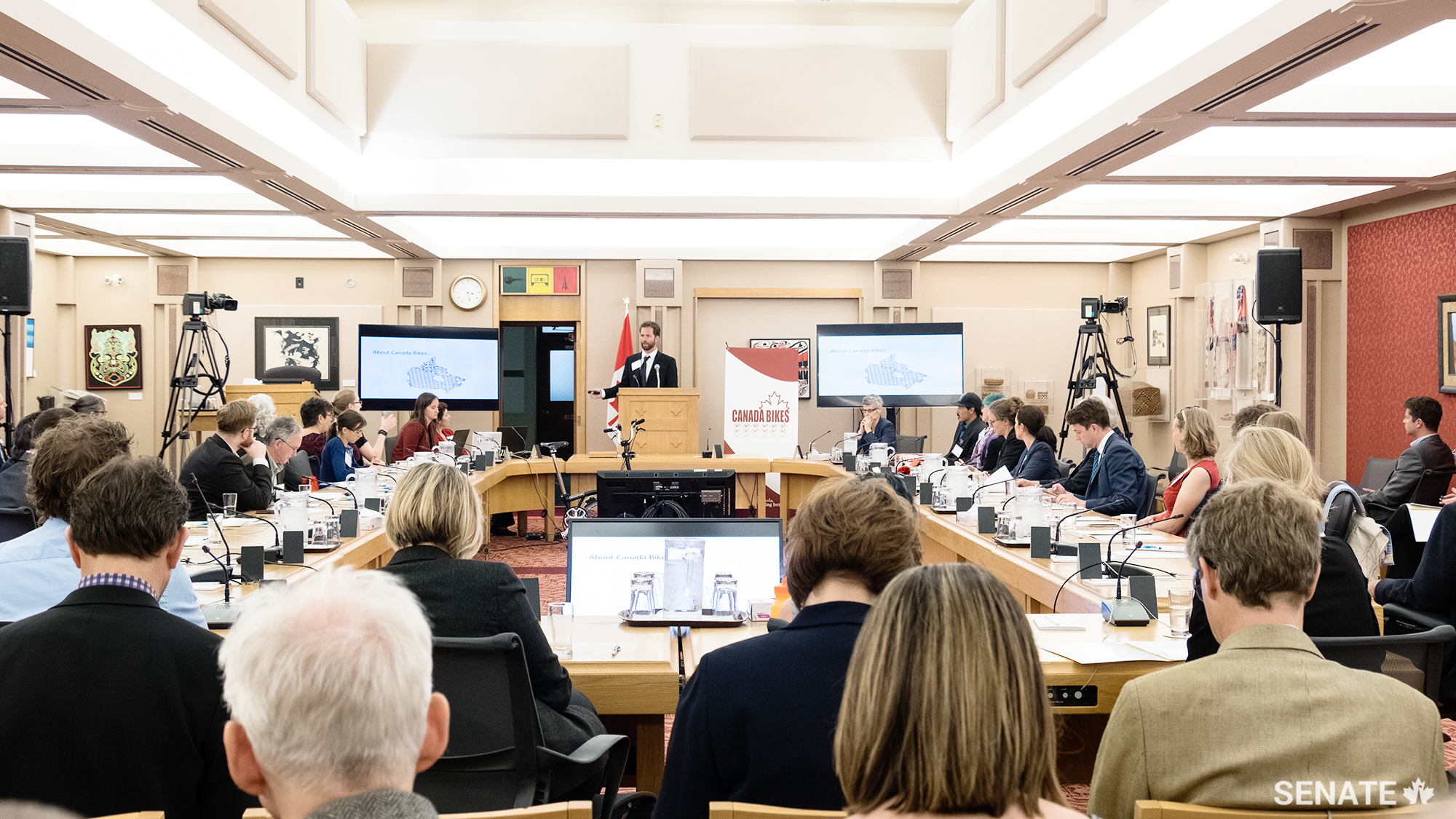

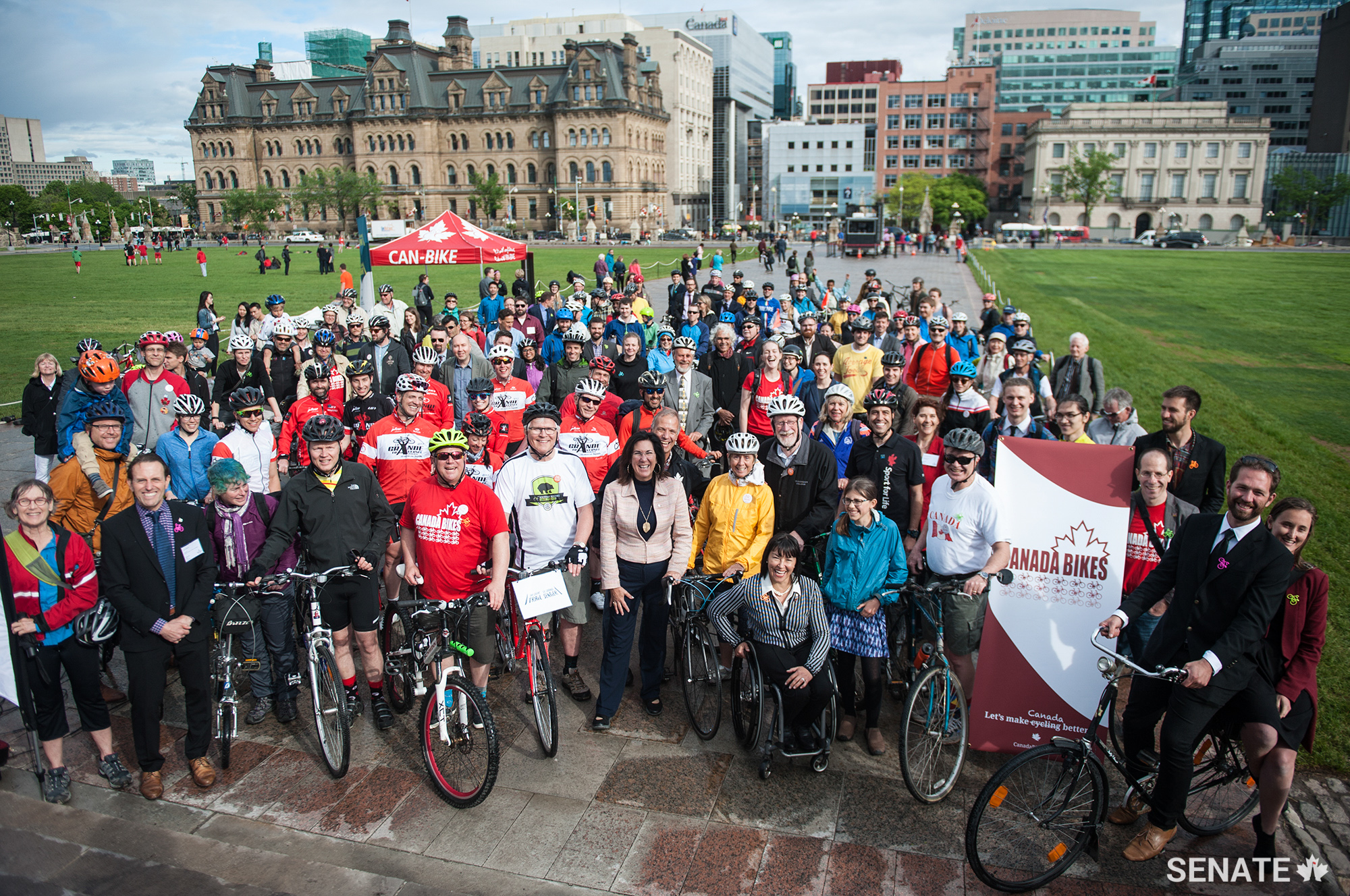
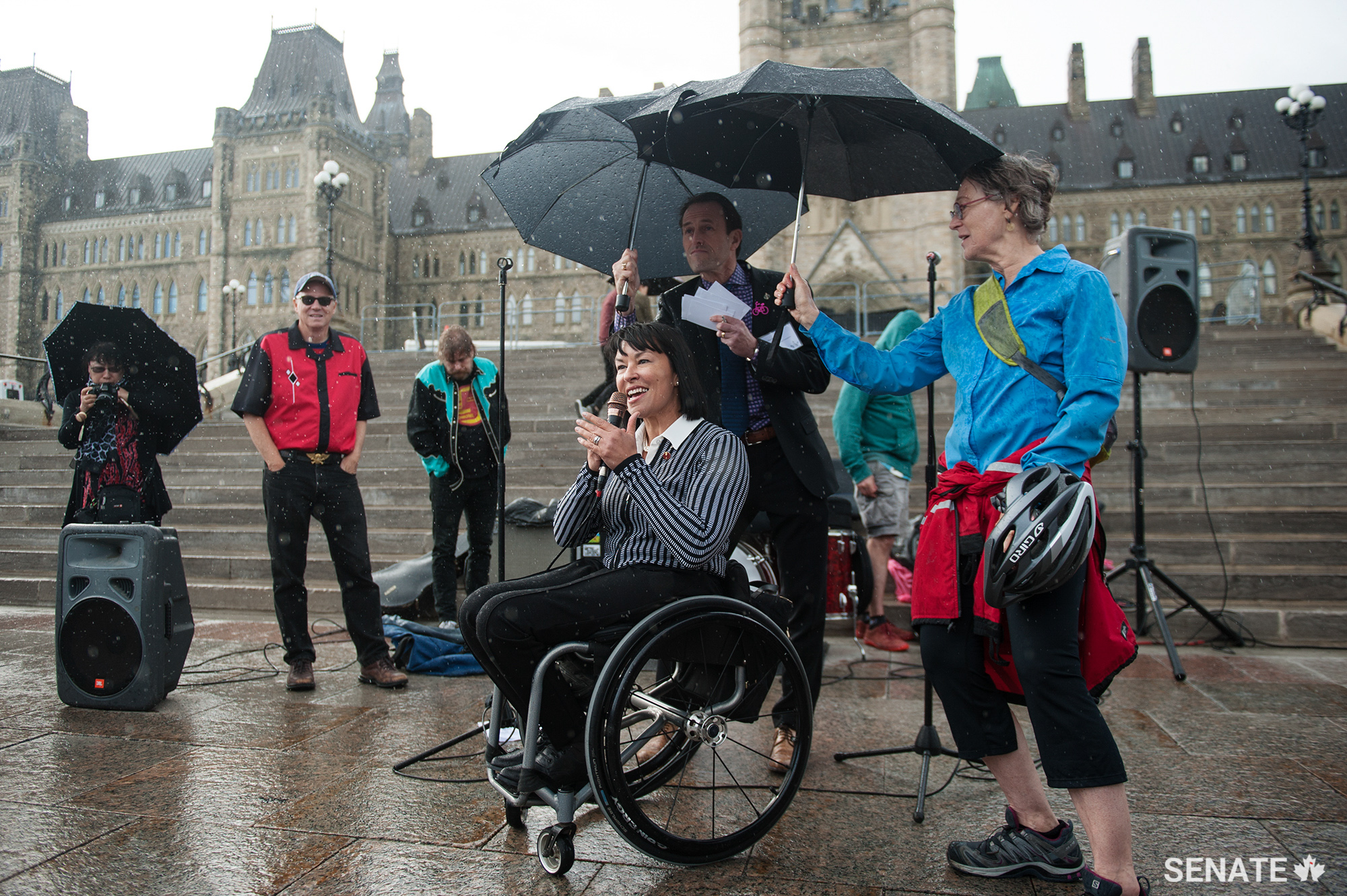
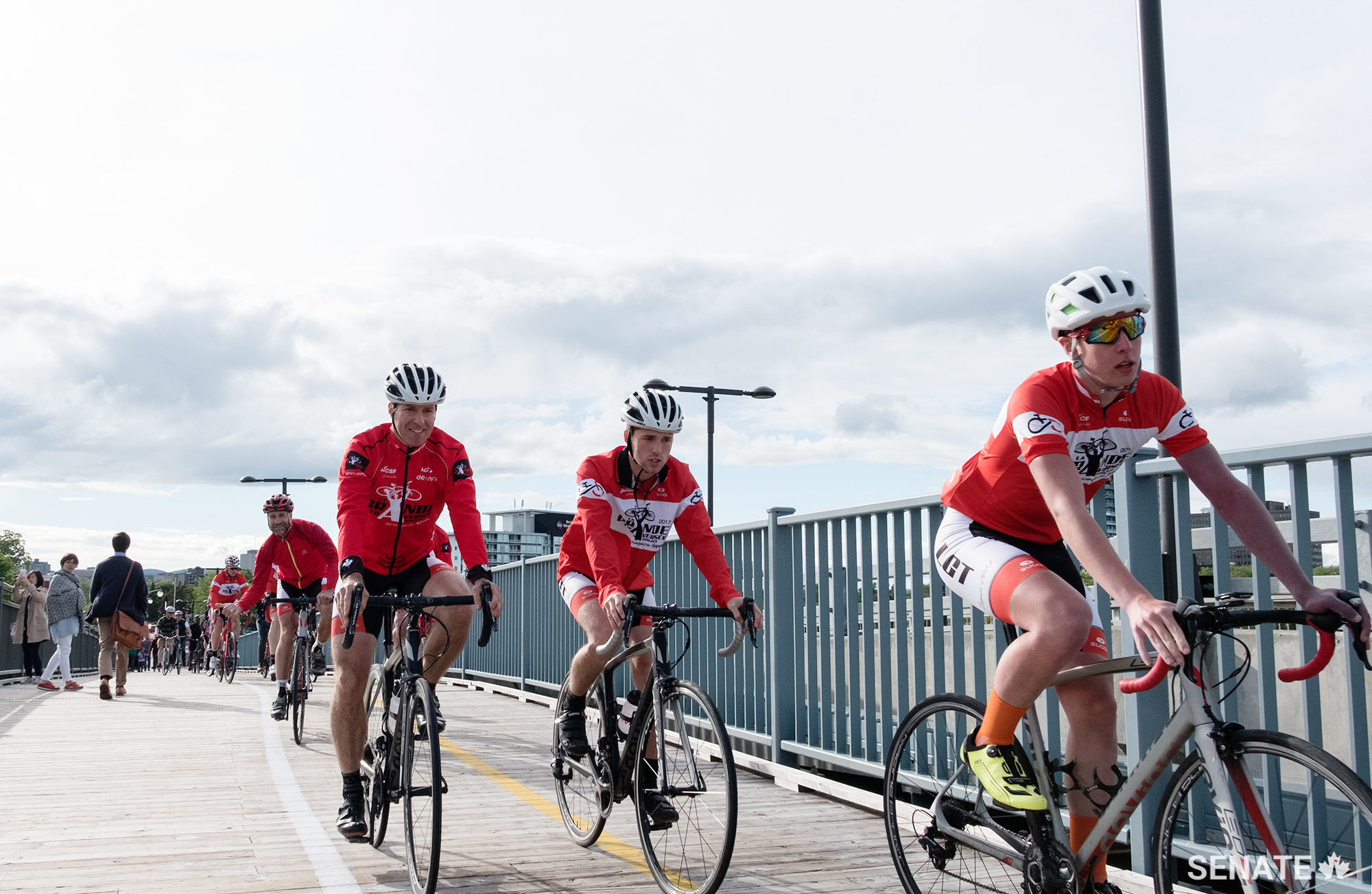
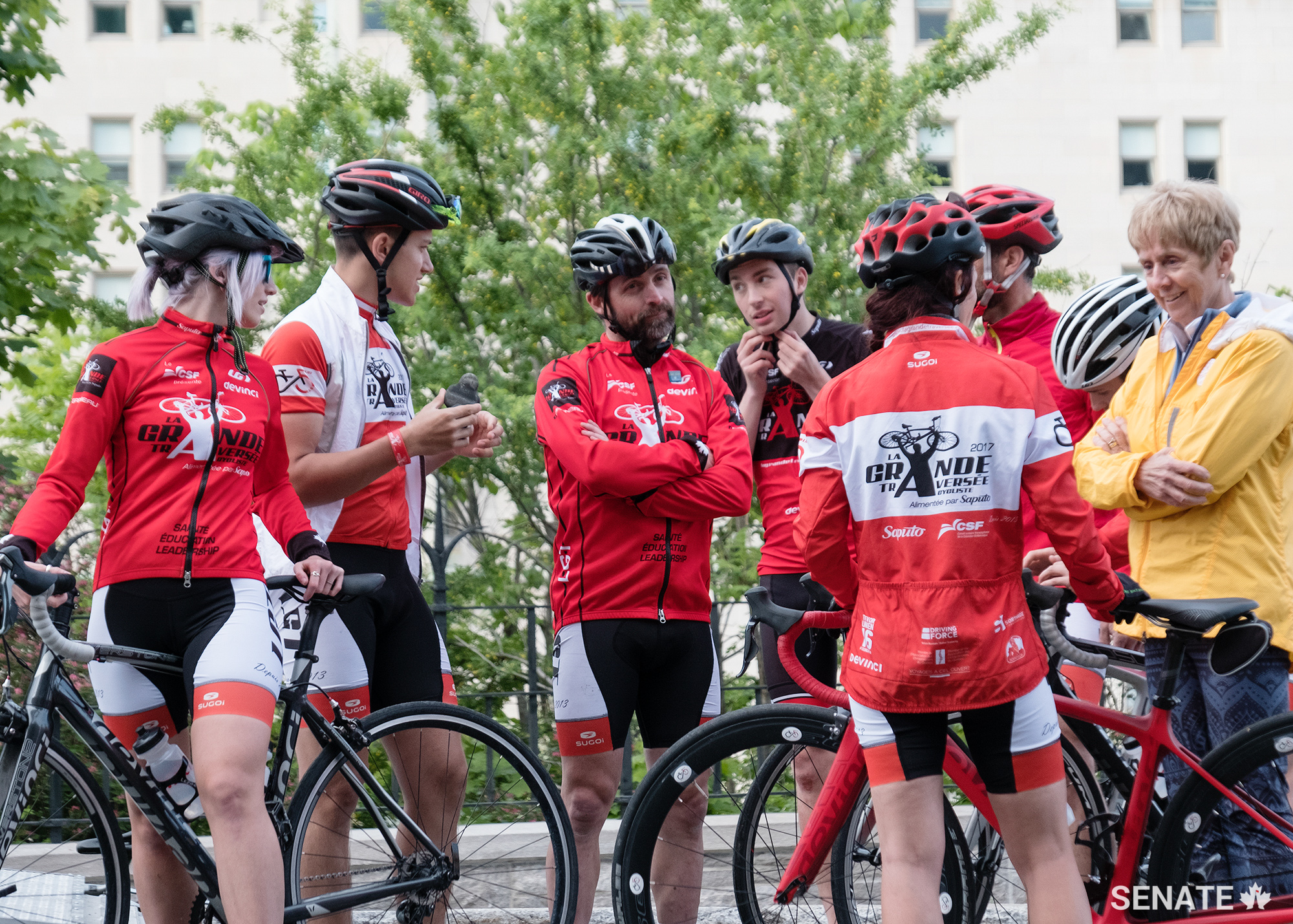


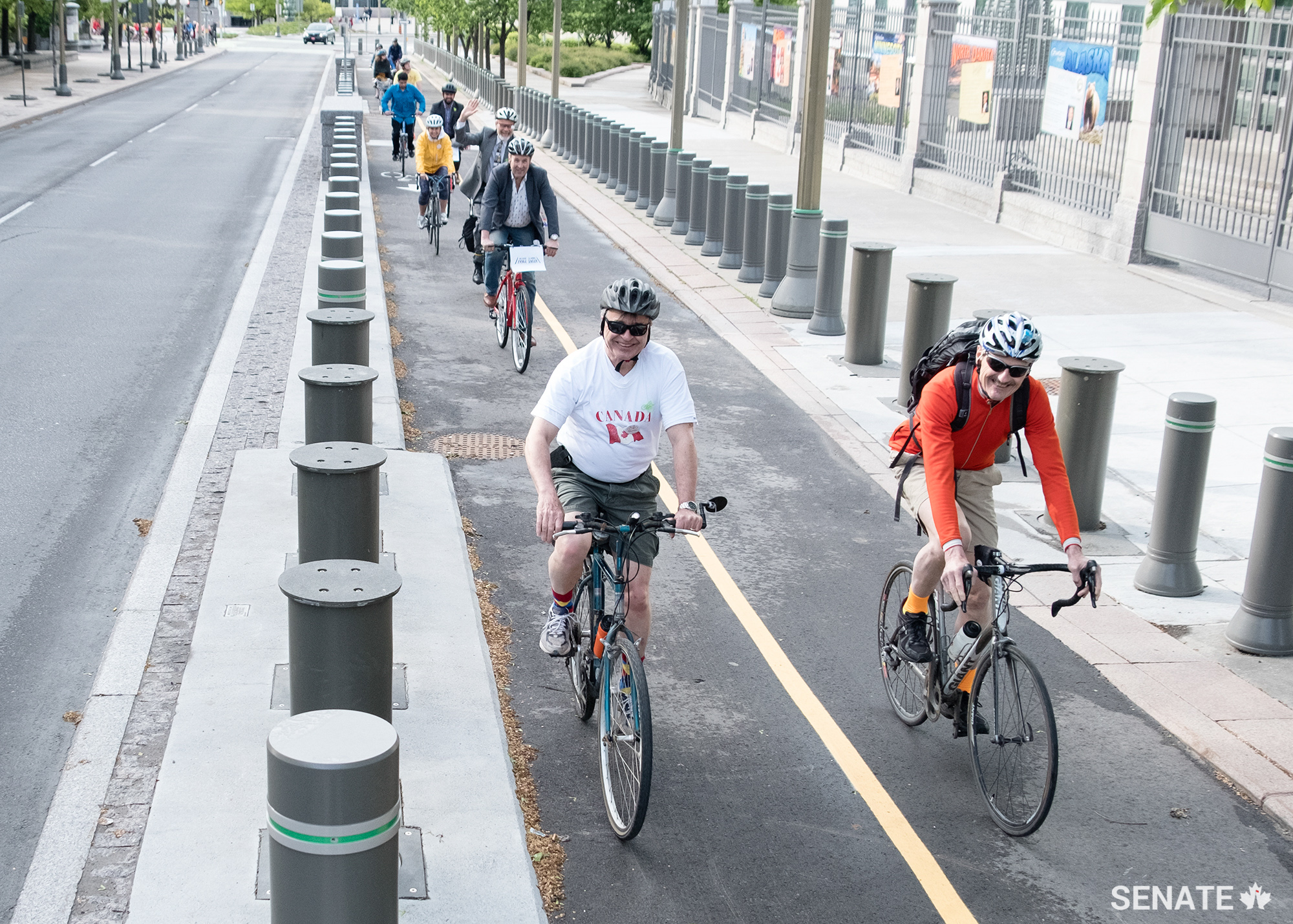
The Public Gallery
Josh Shaw, Lightfoot Bike Shop

Sierra Heffernan-Wilker, youth cycling advocate
![Unfortunately, sometimes riding is not all sunshine, lollipops and owls on the side of the bike path. Sometimes the route to school includes really busy intersections. Please consider bike paths, separated bike lanes and traffic-calmed routes to elementary and high schools… A national cycling strategy […] will make Canada a healthier, greener, and awesomer country…](/media/352865/com_pho_bike_day_ride_2017-06-01_e_004.jpg)
Jean François Pronovost, Vélo Québec
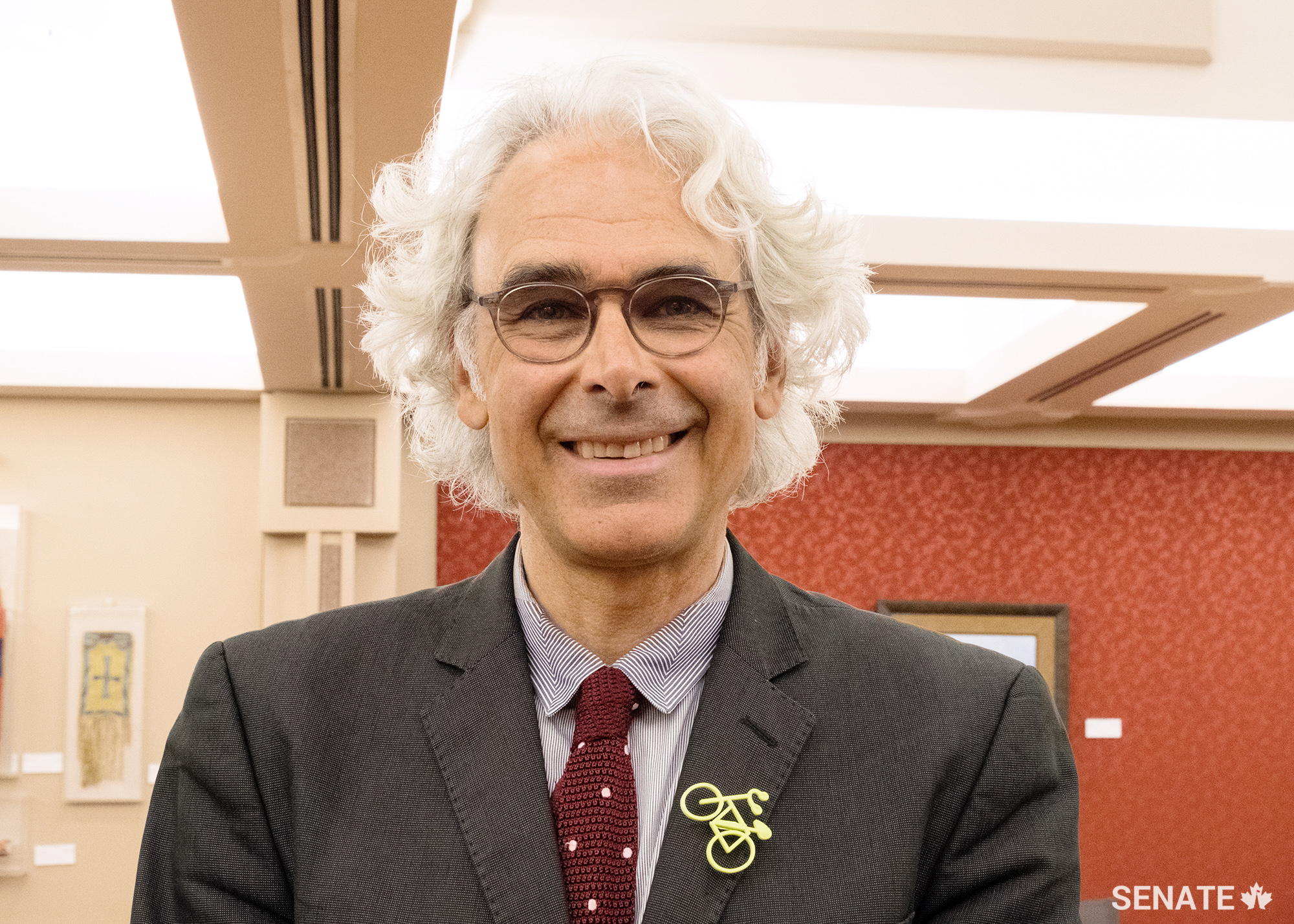
Related articles
Tags
Committee news
Feel alright, hop on a bike

Just a thought: could cycling actually be the most effective strategy in terms of keeping people happy and healthy?
Senator Nancy Greene Raine and Canada Bikes think so.
Last month, the senator led a group parliamentarians, community leaders and everyday cyclists on a ride around the nation’s capital in celebration of Bike Day on Hill. The ride was preceded by the first-ever bike policy summit on the Hill, where cycling advocates called for a national cycling strategy and fleshed out what that might look like. The event also seeks to raise awareness for National Health and Fitness Day — a celebration held on the first Saturday of June, every year, with the goal of making Canada the fittest nation on Earth.
Where does such a strategy start? Getting more people on bikes.
Only 2% of adults in Canada bike to work — a figure startlingly low compared to some countries in Europe, but actually twice as high as the rate in the United States. It seems that cold weather is no excuse.
Habits start young and, today, fewer children bike to school than in previous generations. There is also a noticeable gender imbalance on the road, with roughly 70% of riders being men.
Building more and safer bike infrastructure is undoubtedly the key. More Canadians will chose cycling when it’s safe.
Panelists said that biking would not only improve the physical and mental health of Canadians, it would also help reduce greenhouse-gas emissions, while saving Canadians money. It’s a win-win-win situation.
Bike infrastructure moves more people in a smaller space with lower construction and maintenance costs than equivalent roads for cars. Also, the only tank that needs filling is your stomach!
Kristin Schwarz of Culture Link also told panelists and attendees that biking has proven to help newly arrived Canadians improve their sense of belonging and comfort in the community.
Many municipalities and provinces have decided not to wait for the federal government and have already started putting in place local or regional cycling strategies, panelists Lisa Helps, mayor of Victoria B,C., and Jamie Stuckless of Share the Road Ontario told the audience.
But Canada is an immense country, with some regions more capable of making these investments than others. According to Senator Raine, all Canadians deserve equal access to the joy of biking.
“It’s time for a national cycling strategy,” said the senator.









The Public Gallery
Josh Shaw, Lightfoot Bike Shop

Sierra Heffernan-Wilker, youth cycling advocate
![Unfortunately, sometimes riding is not all sunshine, lollipops and owls on the side of the bike path. Sometimes the route to school includes really busy intersections. Please consider bike paths, separated bike lanes and traffic-calmed routes to elementary and high schools… A national cycling strategy […] will make Canada a healthier, greener, and awesomer country…](/media/352865/com_pho_bike_day_ride_2017-06-01_e_004.jpg)
Jean François Pronovost, Vélo Québec



